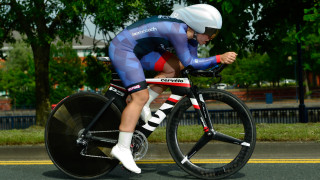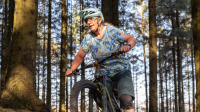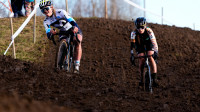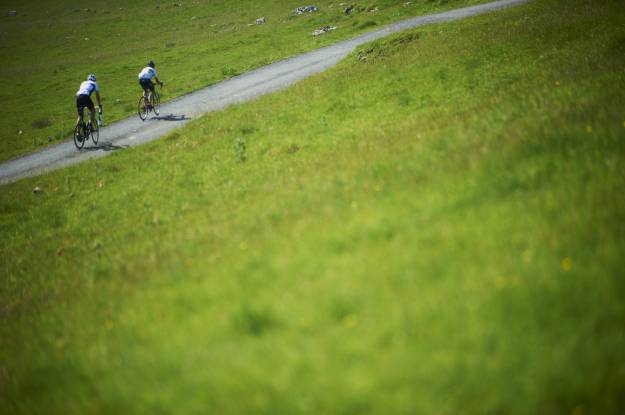Knowledge Level: Intermediate
Top riders take every step to optimise their bike, equipment, ride position and team tactics to minimise drag and maximise the speed they can achieve. Whether you are riding your local club 10-mile time trial, a sportive or a circuit race, the air you are riding through is one of your most significant adversaries. Beat it by following these tips for cheating the wind.
Group skills
Well drilled professionals riding a team time trial is a wonderful sight. Whether riding in a single or double pace line formation, they will rotate turns on the front then recover by dropping back and sitting in the wheels.
Any group riding situation gives you the opportunity to find shelter and cheat the wind. Good group riding skills are easiest to learn by joining a local club run. If you are not confident and relaxed sat in the wheels, you are missing out on massive potential energy savings. Studies have shown that sitting behind another rider requires 30% less energy. Even the most mountainous sportives will have flat valley sections and, if you can ride those sections in a group, you will have more energy for the climbs.
If you want to develop your group riding skills and apply them to racing, joining your club chain-gang is a great place to start. Track riding is also a great way to build skills and confidence riding in a tight fast-moving bunch.
Whenever you are in a group of riders, try to develop a sense for where the wind is and experiment with how best to shelter from it, it is not always by directly following the wheel in front. Watch and follow experienced riders and try to copy their energy saving tactics.
Clothing
The riders in the team time trial will all be wearing tightly fitting skin suits and, if you are looking to improve your own time trial performance, a skin suit is definitely a worthwhile investment. It should be tight, the cut should mean that standing upright feels strained, and there should be minimal creasing of the material and absolutely no baggy fabric. Take care pinning your number on. Position is low down on your back out of the wind for a time trial and use plenty of pins to keep it flat.
Even if you are not battling the clock, ensuring that your clothing is not baggy or billowing in the wind will save you measurable time. Make sure jackets are closely fitting, do up zips on flats and descents and make sure all velcro tabs and buckles are fastened. Use the noise test, if you can hear any flapping, it is costing you energy.
Helmet
Against the clock a time trial helmet can represent one of the best aero gains for pounds spent. However, it has to be right for your riding position. If you keep your head up and still, a long tailed helmet could work well but, if you tend to dip or move your head, a stub tailed helmet would suit you better. Try a few different ones, get some side on pictures taken but don’t forget that your position may change with fatigue.
For bunch events, you don’t need to turn up with a full aero helmet, but aero road helmets with fewer vents are now common. The gains may be marginal but they all add up, however you need to weigh up any potential aero gains with the risk of overheating in hot weather though.
Whatever helmet you opt for though, don’t forget to trim and tuck in the chin strap.
Position
Professional riders will spend hours in the wind tunnel optimising their time trial position but, by taking some side and head on photos of your position on the turbo, you can certainly gain time. Look for a flat back, try to achieve a gap free transition from your helmet to your back and minimise your frontal area. Look at how “turtling” your head (keeping your head lower, but extending your neck to look straight ahead), by bringing your shoulders forward, reduces your frontal area and work on holding that position. There is even free software available online that will allow you to calculate drag from digital images.
Position on the bike is also key in bunch events. Are you comfortable down on your drops or adopting a low position on your hoods? You may need to work on your mobility to allow you to get lower but, if you are spending the entire time upright with straight arms, you will be wasting valuable energy.
Try to think compact and, as with group riding, experiment with how altering your position feels in relation to the wind and how it affects your speed. Avoid letting your knees angle outwards, consciously drive them slightly inwards towards the top-tube, and try to keep your upper body as still as possible.
Bike
Bike manufacturers are investing huge amounts of time into optimising the aerodynamics of their machines but remember that the biggest cause of drag will always be the rider. Ticking all the boxes described above will yield the biggest gains but you can still gain a few more watts.
Try to keep the front of your bike aerodynamically clean. Minimise clutter on your bars, mount your computer with the wind in mind and make cabling as neat and direct as possible.
A more aerodynamic deep section, or disc rear for time trialling wheelset is probably one of the most effective aero upgrades you can buy but, before you step onto the slippery slope of spending pounds in the pursuit of a handful aero seconds, consider whether you may gain more by spending the equivalent amount on employing a British Cycling Level 3 coach or investing in and learning to use a power meter.











